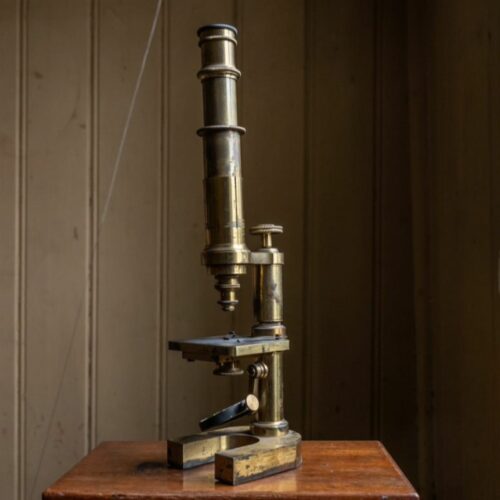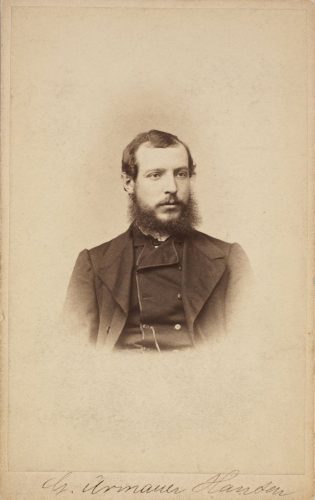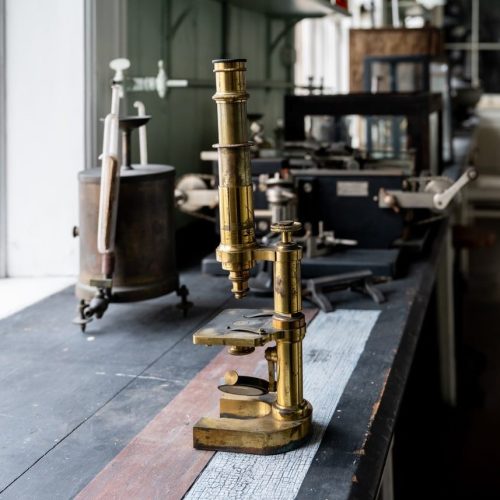Microscope by ‘Hartnack et cie’

This is the type of microscope that Armauer Hansen was using when he discovered the leprosy bacterium. He mentions in his 1874 publication that he was using a Hartnack lens No. 11 to examine tissue samples when he observed the ‘rod-shaped bodies’ that turned out to be Mycobacterium leprae.
In his 1880 publication, he also mentions that he had used a Hartnack lens No. 9 to examine the distilled water that he used to examine the tissue samples from Johannes Gill on 28 February 1873. There is reason to assume that Hansen also performed other examinations using the same microscope.
The microscope stand is engraved with the inscription E. Hartnack et Cie. Place Dauphine 21. Paris. The company worked under this name and at this address from 1870 to 1872, so the microscope probably dates from this period.
Hartnack microscopes were renowned for their high quality. Other famous scientists, such as the French biologist Louis Pasteur and the German physician Robert Koch, also used microscopes by Hartnack. The microscopes received an award at the International Exhibition in London in 1862. In 1868, Hartnack was awarded an honorary doctorate for their excellent microscopes at the University of Bonn, where Hansen stayed in 1870. It is possible that Hansen purchased the microscope during his time there, but this is not known for sure.

Photo: Fredrik Kleim. The University of Bergen Library.

Photo: Bergen City Museum.



